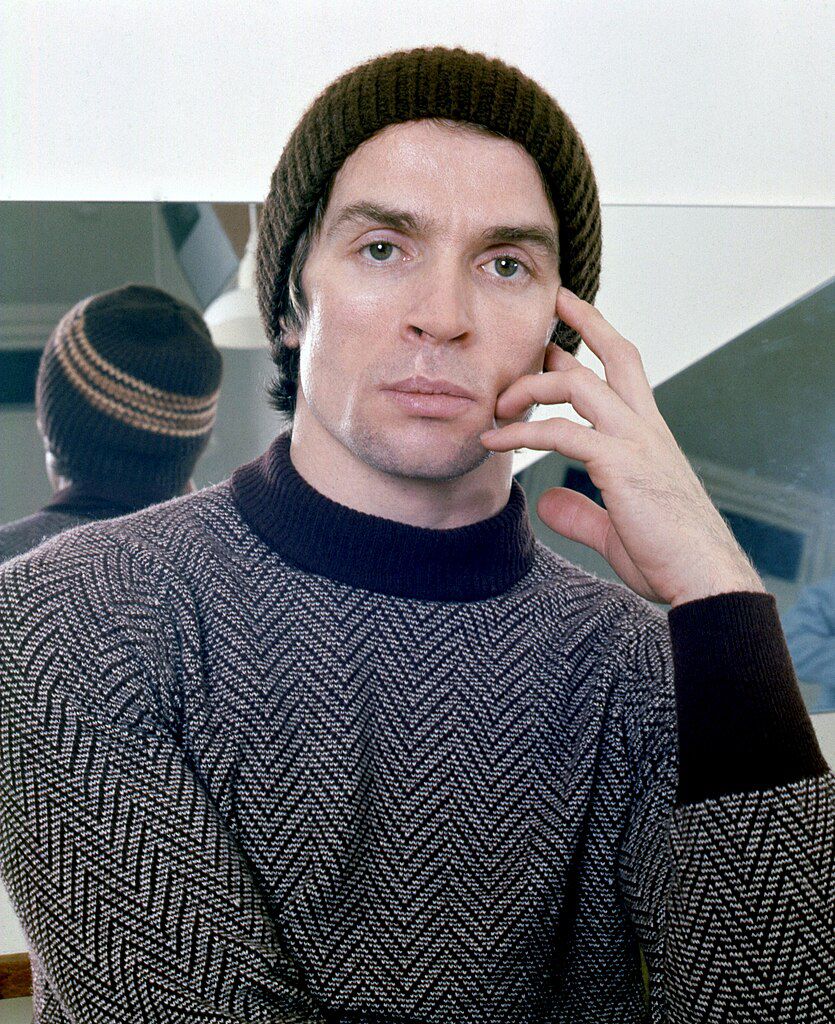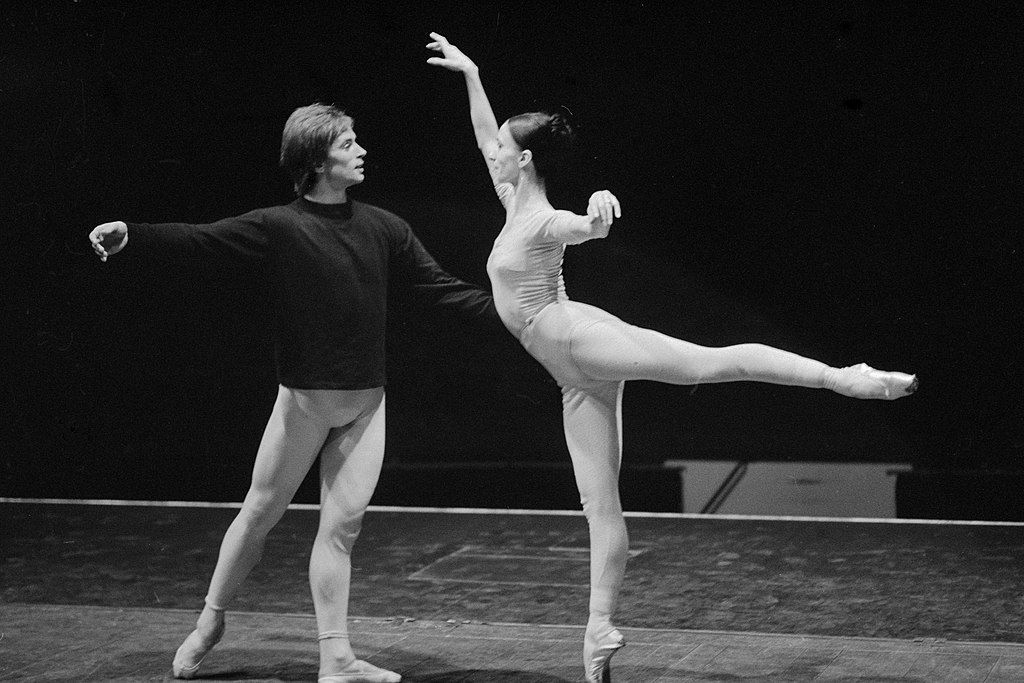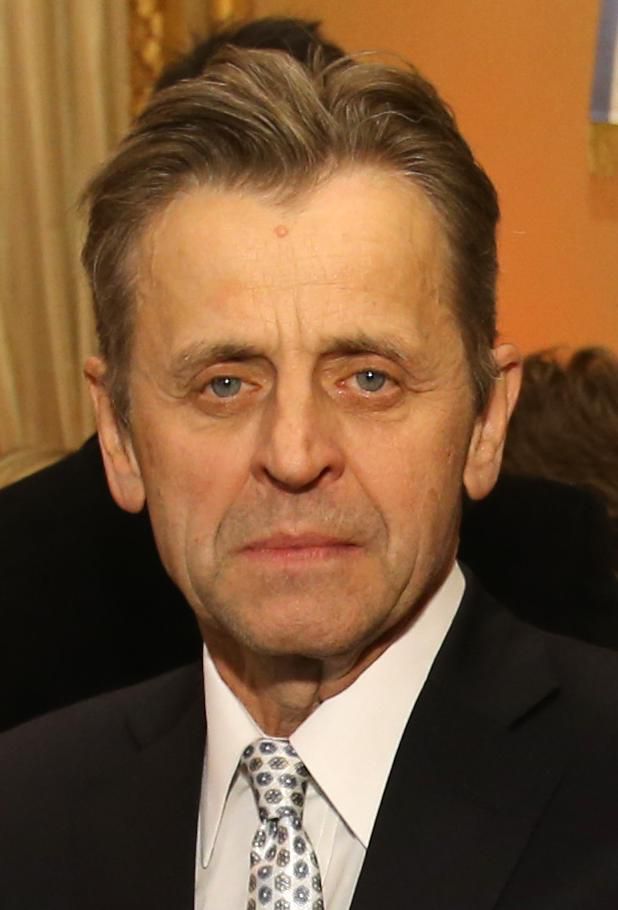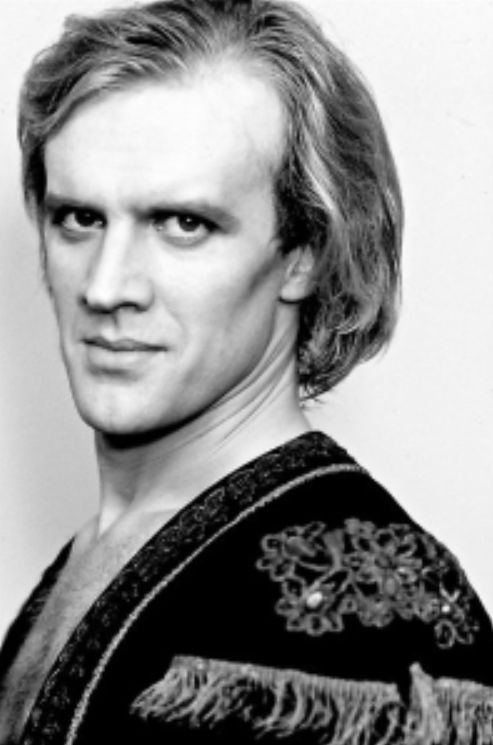Our previous article dealt with the phenomenon of nevozvrashhency. Under “nevozvrashchency” were meant Soviet citizen who illegally stayed abroad after their official tours or journeys ended instead of going back to the Soviet Union because they didn`t want to live there and wanted to have another life. Usually after nevozvrashchency began a new life in Europe or in the USA, they found themselves pretty lonely and had to start everything from zero. Here we will develope this topic, discussing three magnificant ballet dancers who dramatically changed their lives after they decided not to returnto the Soviet Union.
Rudolf Nureyev: the Tatar prince

Source: Wikipedia
The Rudolf Nureyev`s origins were just as extraordinary as his entire life. In March 1938 his mother traveled by a train to Vladivostok to visit her husband who served in the Military. The distance was long and baby Nureyev was impatient: he was born right on the train on the 17th of March 1938. Having a Tatar mother and a Bashkir father, Rudolf Nureyev was always uncertain about his ethnical self-identity , but he certainly felt that his roots are not Russian.
At the age of 6 he understood what he wanted to do in his life: his mother took him to a theater to watch a ballet and small Rudolf was caught and fascinated. He took up classes at a children’s dance school, which allowed him to take his mind off poverty and horror of the Second World war. Later he transferred to the ballet school at the Bashkir theater of ballet and opera and in 1955 he moved to Leningrad (nowadays Saint Petersburg) where he became a member of the troupe at theKirov theater (today Vaganova Academy of Russian Ballet, one of the best ballet schools). Because of his challenging temperament and cases of bullying in academy Rudolf had to live at his coach`s place. In 1958 he gained success for the first time, performing in the ballet Laurencia.

Source: Wikipedia
In 1961 during the tour in France Rudolf Nureyev managed to escape from the officers of KGB and applied for an asylum. His first performances in Paris were received by the audience with delight. Despite the success, he failed to obtain a residence permit in France and had to move to Denmark where he joined the Royal Danish Ballet. He also used to perform at the Royal Ballet in London. Rudolf Nureyev was a very charismatic dancer; capable of embodying diverse male ballet characters. His strength and gracefulness were remarkable, and his body remained remarkably pliable.. In London he became a dance partner of Margot Fronteyn, their partnership lasted 17 years. In 1964 Rudolf Nureyev performed with Margot Fronteyn “Swan Lake” in Vienna, receiving an astounding 80 encores from the audience. A real workaholic, Rudolf Nureyev used to perform 200 times per year, in 1975 he reached the number of 300. Moreover, he tried acting, created ballets, worked as a coach at the Paris opera, promoted talented dancers. At the end of his life when Rudolf Nureyev couldn`t dance anymore, he tried himself as a conductor. On the 6th of January 1993 Rudolf Nureyev died because of AIDS and was buried at Sainte-Geneviève-des-Bois Russian Cemetery in Paris.
Talented Mikhail Baryshnikov

Source: Wikipedia
Mikhail Baryshnikov was born in Riga in 1948. He came from an ordinary Russian family. At the age of 12 he faced his first loss ,when his mother passed away. Like every child he attended school and after it he took classes at the Riga dance school. With assistance of his first teacher Mikhail enrolled at the Kirov theater in Leningrad in order to continue his dance education. This decision proved to be difficult for Mikhail Baryshnikov as he had practically no connections in Leningrad so he treated his dance teacher from Riga like a father. Mikhail`s teacher insisted on studying in Leningrad and Mikhail moved there. He proved to be an outstanding student and was instructed bythe coach of Rudolf Nureyev. The friendship between Mikhail Baryshnikov and his first teacher lasted for the entire life so Baryshnikov hosted him at his place in the USA in 1988. In 1694-1974 Mikhail Baryshnikov was the leading dancer at the Kirov theater in Leningrad but during the tour in Canada in 1974 he got an offer from the American ballet theater and stayed abroad.
From the very beginning his career was on top. From 1974 till 1978 he was principal dancer at the American ballet theater and from 1980 till 1989 he worked as a dance and artistic director there. But his interests weren’t confined just to dancing. Mikhail Baryshnikov wanted to reevaluate and to reinterpret ballet and dance; he tried new forms of dance and new choreography. He also starred in different movies and series. His best-known movies include «The Turning Point» (1977) and «White Nights» (1985). He is also to be seen in the last season of the television series Sex and the City.
Having tried acting,Mikhail Baryshnikov decided to support young dancers and in 2005opened the Baryshnikov Arts Center in New York. His career also involved a Russian restaurant called Samovar in New York. With support of his best friend, the Russian Nobel prize winner Joseph Brodsky, he gained funds to invest some money in the Russian restaurant, which you can enjoy while being in New York. Nowadays he continues to run his Baryshnikov Arts Center.
Thorny path of Alexander Godunov

Source: Wikipedia
Alexander Godunov was born in 1949 on the island Sakhalin, where his parents, both engineers, were sent from Leningrad to work. After Alexander`s parents ended their studies at the university, they got a contract from the government to work on Sakhalin but just three years after their son Alexander was born, they divorced, and Alexander’s mother brought him to Riga. In Riga small Alexander lived at first at his uncle`s place but one year later his mother also moved in with them so the family was happy enough. It was decided, that Alexander would be sent to a dance school in order to distance him from family drama and to develop his talents. In 1958 Alexander began to take ballet classes at the Riga dance school under the guidance of the former teacher of Mikhail Baryshnikov. At the age of 18 he got a position in the corps de ballet at the Latvian National Opera and Ballet because he wasn`t mature enough to have a principal role. But driven by ambitions, Alexander moved to Moscow without permission. His intention was to dance at the Bolshoi Theater, but eventually he became a member of a ballet troupe at the recently created theater «Yong Ballet». With this troupe, he traveled around the world And striving to advance his career, a year later Alexander finally got a position at the Bolshoi Theater. Unfortunately, at that time the Bolshoi Theater experienced a crisis: famous ballet dancers were fighting for an opportunity to become the leading dancer. Due to these conflicts Alexander Godunov didn`t perform a lot.
He was 29 years old when in August 1979 the troupe of the Bolshoi Theater undertook a tour to New York. There he asked for asylum while his wife, also a ballet dancer, was already on the plane to Moscow. The plane was stopped and three days she wasn’t allowed to leave the plane because of an ongoing investigation. The authorities inquired if she was aware of her husband’s plans to stay in the USA and if she really wanted to return to the Soviet Union or this decision was taken under pressure. Finally, the plane flew back with his wife on board home. Alexander and his wife got divorced in 1982.
Alexander Godunov became a leading dancer at the American ballet theater like Mikhail Baryshnikov but due to their personal conflicts he left the theater and established his own troupe. With his troupe he traveled around the world and starred in several films (e.g. Witness in 1985, Die Hard in 1988, Waxwork II: Lost in Time in 1992 etc.).
In April 1995 Alexander Godunov visited his mother in Riga. Latvia faced multiple problems after the dissolution of the Soviet Union. He gathered with his mother and siblings, while his father refused to meet him. One month later Alexander Godunov was found dead in his house. According to the official version his death was caused by alcoholism and complications of hepatitis, however, his family claimed later that they hadn`t noticed any signs of his diseases. After Alexander Godunov was cremated, his ashes scattered in the Pacific Ocean. A memorial to him at Gates Mortuary in Los Angeles is engraved with an epitaph “His future remained in the past».
